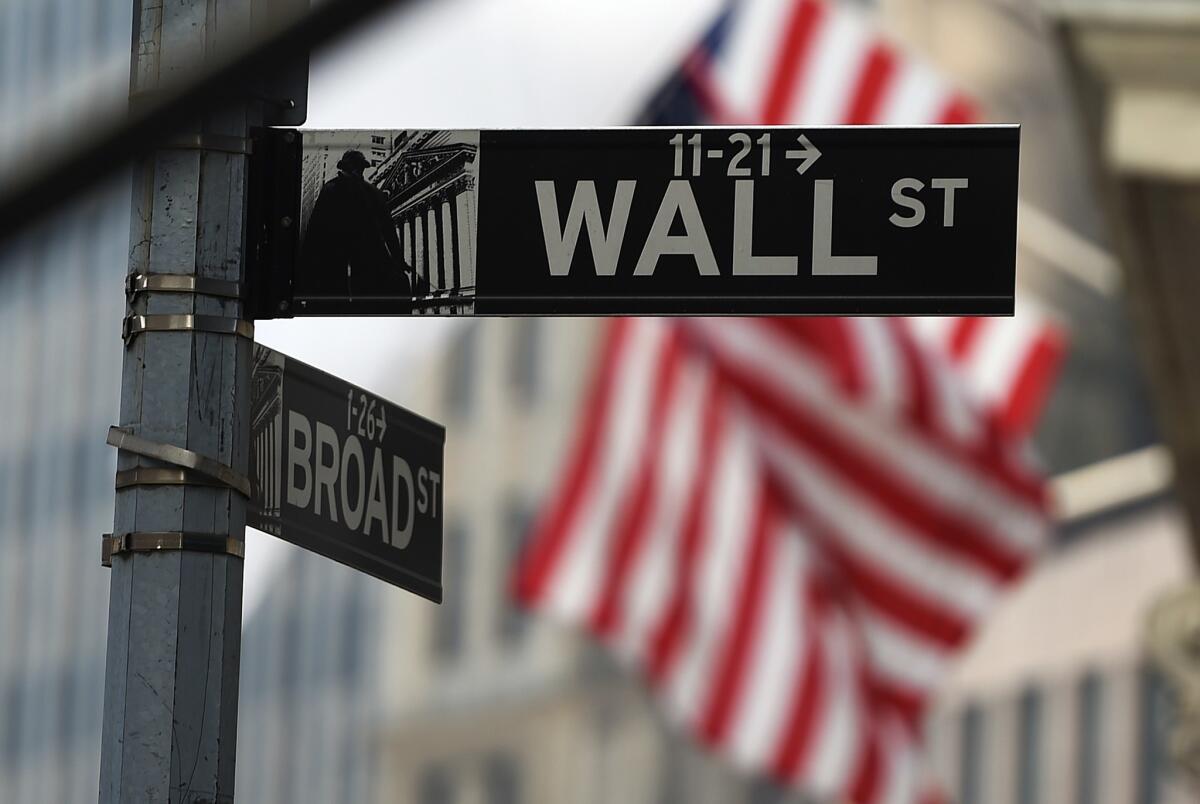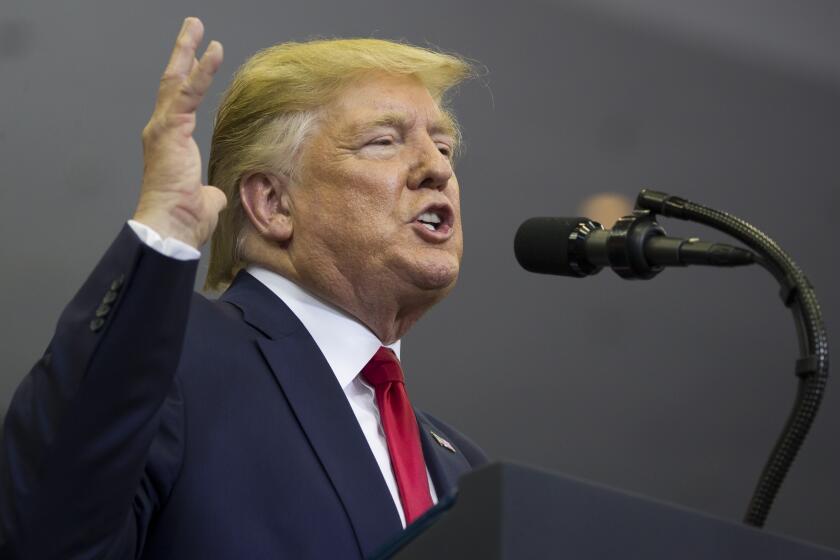Wall Street’s rally ends on fears about U.S.-China tensions

- Share via
Wall Street’s rally ran out of fuel in the last hour of trading Thursday, and the market fell to its first loss in four days amid worries about rising U.S.-China tensions.
The S&P 500 had been climbing for much of the day and was up as much as 1.1% at one point. But it all disappeared after President Trump said he’d hold a news conference about China on Friday. That raised immediate worries among investors about possibly worsening relations between the world’s largest economies, which had signed a deal earlier this year to at least pause their trade war.
The S&P 500 ended the day down 6.40 points, or 0.2%, at 3,029.73. The Dow Jones industrial average swung from a gain of 210 points to a loss of 147.63 by the close of trading, down 0.6% to 25,400.64. The Nasdaq composite fell 43.37 points, or 0.5%, to 9,368.99.
U.S. and Chinese officials have been trading harsh rhetoric recently on topics including Hong Kong and the response to the coronavirus outbreak. Investors are worried that rising tensions could lead to another punishing round of escalating tariffs between the two countries, which would only further damage a global economy punished by a severe recession due to the pandemic.
Energy producers and banks fell to some of Thursday’s sharpest losses.
Twitter also lost 4.4%. Trump signed an executive order late Thursday to study whether new regulations could be placed on social media companies. He has been railing against Twitter since it applied fact checks to two of his tweets that provided incorrect information.
President Trump threatened Wednesday to strongly regulate or close down social media platforms he deems unfriendly to conservatives, escalating a war with Silicon Valley a day after Twitter for the first time warned that Trump was posting false claims, about mail-in voting.
Earlier in the day, the S&P 500 seemed to be rolling toward its fourth straight gain, which would have been its longest winning streak since before the market began to sell off in February.
Gains for healthcare stocks helped the S&P 500 at one point climb back within 10% of its record high. Johnson & Johnson rose 1.4%, Pfizer gained 2.1%, and Eli Lilly added 3.4%.
Dollar Tree jumped 11.6% for the largest gain in the S&P 500 after the retailer reported stronger revenue and earnings for its latest quarter than Wall Street expected. In an encouraging sign, executives also said recent trends had been improving for purchases of discretionary items, such as kitchenware and toys, instead of just essentials for hunkering down.
Even with Thursday’s loss, the S&P 500 is still on pace for its third weekly gain of at least 2.5% in the last four weeks. Following their breathtaking drop of nearly 34% in February and much of March, stocks began recovering after the Federal Reserve and Capitol Hill pledged unprecedented amounts of aid for the economy.
More recently, the market has pushed higher as investors move into stocks that would benefit most from a reopening economy. Governments around the country and around the world are slowly lifting restrictions meant to corral the outbreak, which has investors hoping the worst of the recession has already passed, or will soon.
Some analysts warn the rally has been overdone. The stock market has rebounded very quickly after hitting a bottom in late March, but the economy may take much longer to heal and recover. That could be setting investors up for disappointment in the future.
Longer-term Treasury yields rose Thursday after a government report showed that the number of workers filing for unemployment benefits eased for the eighth straight week, though the number remains incredibly high.
Perhaps more important for the market, the number of continuing claims for unemployment fell to 21.1 million from 24.9 million. It’s the first decline since the number of layoffs exploded in March. If it continues, economists say, it could be a sign that more people are going back to work as states begin their reopenings.
The yield on the 10-year Treasury rose to 0.70% from 0.67% late Wednesday. It tends to move with optimism about the economy’s strength and inflation.
European stock markets mostly rose, while Asian markets were mixed.
A barrel of U.S. crude oil for delivery in July rose 90 cents to settle at $33.71. Brent crude, the international standard, rose 55 cents to $35.29 per barrel.
More to Read
Inside the business of entertainment
The Wide Shot brings you news, analysis and insights on everything from streaming wars to production — and what it all means for the future.
You may occasionally receive promotional content from the Los Angeles Times.











